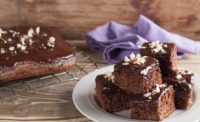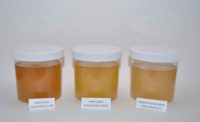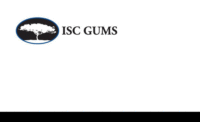Acacia Gum for Clean Labels
For a healthy soluble dietary fiber with nutritional and functional benefits, acacia gum is a clean label solution, applicable in a wide range of foods and beverages.

Clean label products are defined by consumers as being free from chemical additives, with short and understandable ingredient lists, and minimally processed. During the past 10 years, the amount of new products launched in the clean label segment increased dramatically around the globe. (See chart “New Products Launched in the Clean Label Segment.”)
Food industry response has utilized the guidance given for manufacturers by Trader Joe’s and Whole Foods’ “approved lists” of ingredients. German retailer Aldi has instructed the removal of chemicals from its food labels in a move to stock more natural foods on its shelves. In the UK, Tesco has produced a list of additives that it does not wish suppliers to use to meet consumer expectations.
“The food industry wants to replace certain food additives with natural alternatives, offering equal or better functionality,” explained Niall McStay, national sales director-Food Division at Nexira, in his 2013 R&D Seminar Presentation titled “Clean Label and Acacia Gum.” Naturally derived colors are replacing artificial colors; natural antioxidants are replacing chemical preservatives; and natural gums and native starches are taking the place of modified starches and carboxy methyl cellulose.
“Acacia gum is a natural ingredient of choice for clean labels, with powerful functionality. Acacia gum is GRAS, plus it has a natural-sounding name. It is a sustainably sourced, minimally processed ingredient with no chemical treatments or enzymatic modifications. Suitable for a wide range of food applications, acacia gum has multifunctional properties, nutritional benefits, is GMO-free, organic, kosher and halal, and it is well-perceived by consumers.”
Acacia gum is a unique, low-viscosity hydrocolloid which functions as an emulsifier, texturizer and binder, as well as an encapsulation, coating and agglomeration agent. McStay stated that acacia gum is non-hygroscopic; has high solubility at room temperature; and is stable to a wide pH range, from 2.5 to 8.
Stable at low and high temperatures, acacia gum resists freezing and heating. Also stable to high shear and most processing conditions, acacia gum is compatible with other ingredients, and it has good acceptance with no added flavor or color.
In beverages, fruit juices, soups and meal replacers, acacia gum improves roundness and mouthfeel; enhances flavor release; improves stability and suspension; and helps achieve fiber claims. In ice creams and frozen desserts, acacia gum can replace synthetic emulsifiers, plus it helps to reduce ice crystals and improves freeze-thaw resistance.
In baked goods, acacia gum improves freeze-thaw stability, dough conditioning and pliability in tortillas and flatbreads; increases crispiness and reduces breakage in chips and crackers; and, overall, extends shelflife. Acacia gum can be used in cereals, snacks and bars to bind and emulsify, improve machinability, reduce breakage, improve shape and texture, and enhance crispiness.
Nutritionally, acacia gum has been shown to be a prebiotic fiber at 6g/day. A large, highly branched molecule, it is completely but slowly fermented by intestinal probiotics. There are no negative side effects, even at doses up to 50g per day. Acacia gum has been shown to support the production of beneficial short-chain fatty acids in the intestine and to reduce glycemic index.
So, for a healthy soluble dietary fiber with nutritional and functional benefits, acacia gum is a clean label solution, applicable in a wide range of foods and beverages. Plus, acacia gum is a powerful driver of sustainable development in Sub-Saharan Africa, as it is a stable cash crop, and production of acacia trees protects the ecosystem in the region by preventing desertification.
-- Summary by Elizabeth Pelofske, Contributing Editor
“Clean Label and Acacia Gum,” Niall McStay, national sales director, Food Division, Nexira, n.mcstay@nexira.com, 908-704-7482.
Looking for a reprint of this article?
From high-res PDFs to custom plaques, order your copy today!





